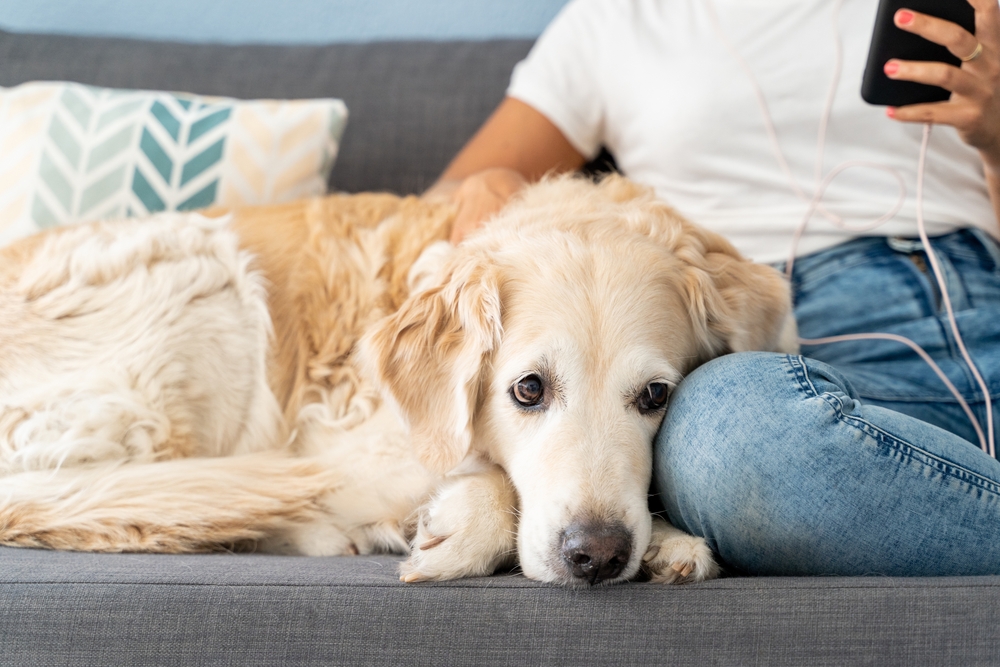 Shutterstock
Shutterstock
Just like humans, dogs can experience anxiety, and it can affect their quality of life in significant ways. Understanding the signs of anxiety in dogs is essential for any pet owner, as early detection can help you provide the right care and interventions. Dogs may exhibit anxiety due to various factors, including changes in the environment, separation from their owner, or traumatic experiences. Knowing what to look for can help you address the problem and make your furry friend feel more secure and comfortable.
Excessive Barking or Howling
 Shutterstock
Shutterstock
One of the most noticeable signs of anxiety in dogs is excessive barking or howling, especially when left alone. While some dogs bark to alert you of potential intruders or because they are excited, the anxiety-driven barking often sounds different. It tends to be continuous and more frantic. Your dog may be trying to call for your attention or express their discomfort when they feel isolated or threatened. If your dog seems to bark at the slightest noise or constantly howls when you’re not home, it could be a sign that they’re struggling with anxiety.
Destructive Behavior
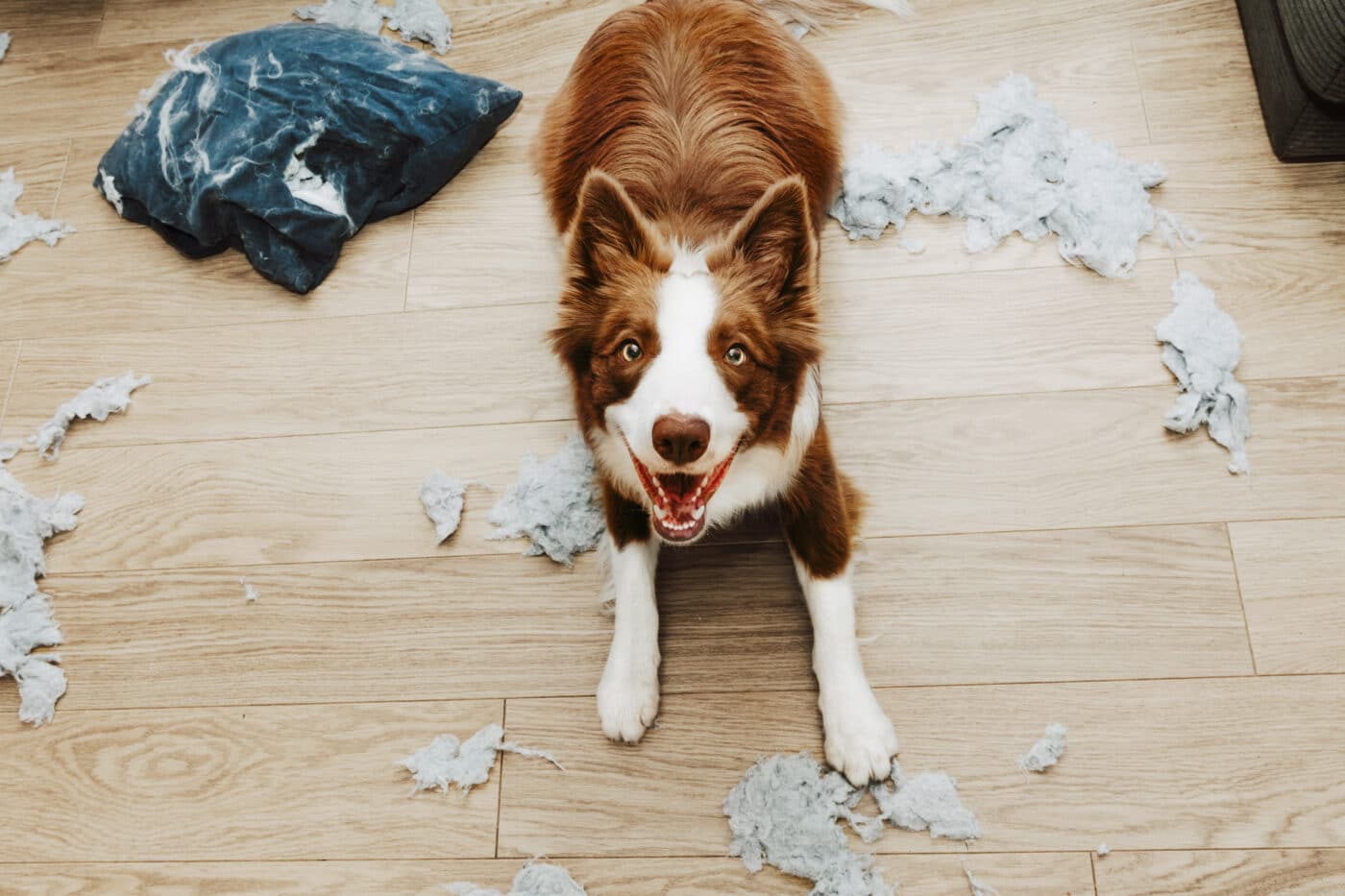 Shutterstock
Shutterstock
Dogs experiencing anxiety may exhibit destructive behaviors, such as chewing furniture, scratching doors, or digging holes in the yard. This behavior is usually a result of pent-up energy and stress. Anxious dogs may chew on objects or try to escape because they are overwhelmed by their emotions. It’s not just a case of boredom; rather, it’s a sign that your dog is using destruction as a coping mechanism. If your dog is suddenly destroying items around the house, consider whether anxiety might be the underlying cause.
Panting and Pacing
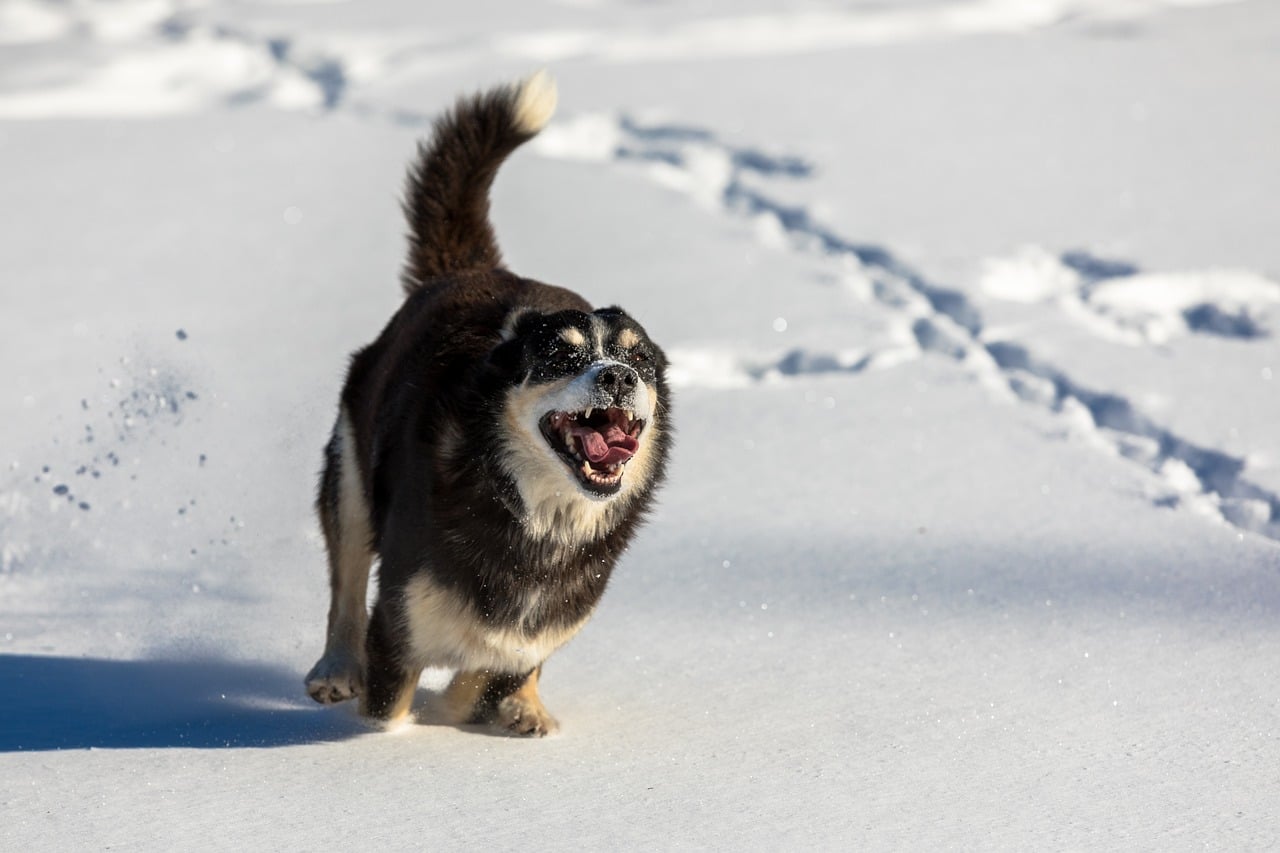 Shutterstock
Shutterstock
Panting and pacing are common signs of stress and anxiety in dogs. Unlike panting after exercise, anxiety-driven panting may occur even when your dog hasn’t been physically active. Pacing is another indication that your dog may be feeling restless or uneasy. They may walk back and forth, circle around furniture, or follow you closely. This behavior shows that your dog is unable to settle down due to their anxious state. If you notice your dog frequently panting and pacing without a clear reason, anxiety could be the culprit.
Trembling or Shaking
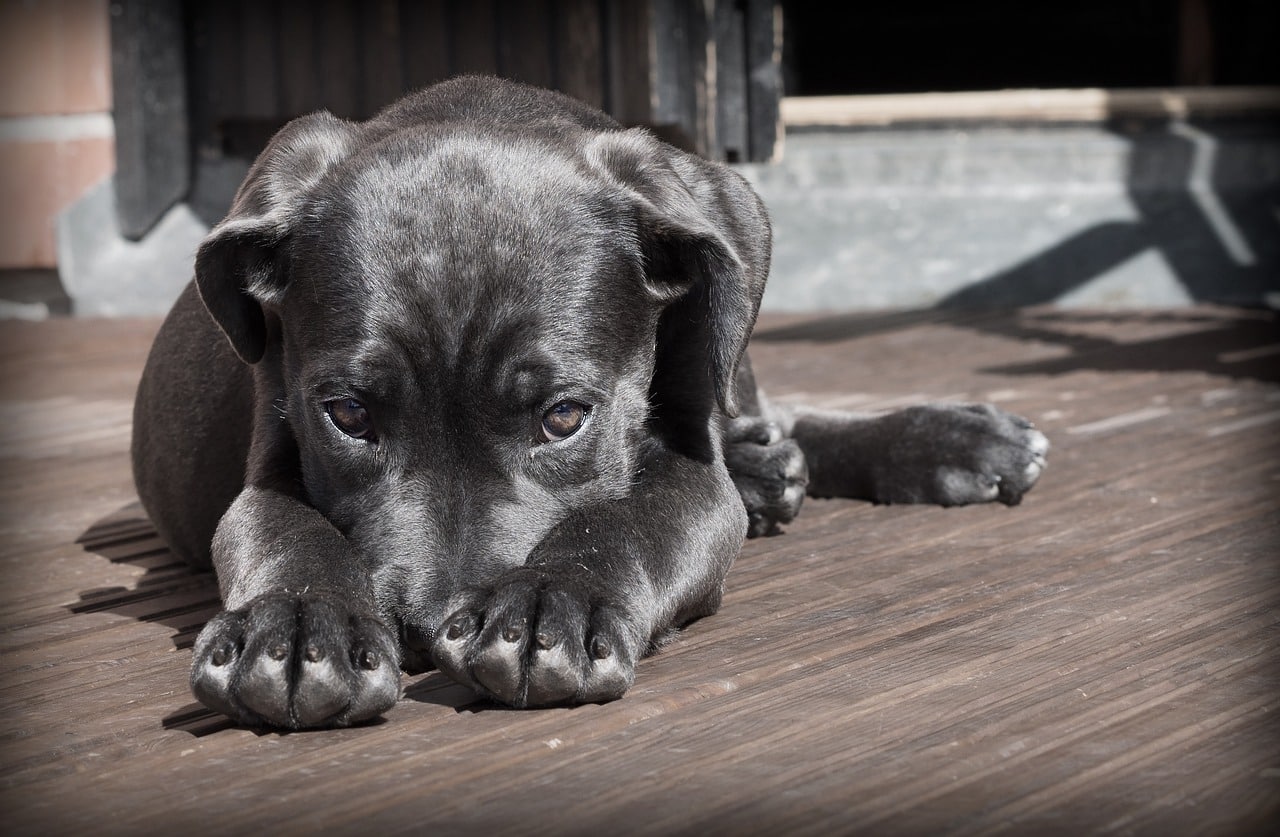 Shutterstock
Shutterstock
Some dogs exhibit anxiety by trembling or shaking, which is more common in smaller breeds, but it can affect dogs of all sizes. If your dog appears to be shaking even when it’s not cold or they haven’t been exerting themselves, it could be a sign that they are feeling anxious or frightened. This behavior can be especially noticeable during thunderstorms, fireworks, or other situations that might trigger a dog’s anxiety. Keep an eye out for when the trembling occurs, as it may give clues to what is causing your dog’s distress.
Excessive Licking or Grooming
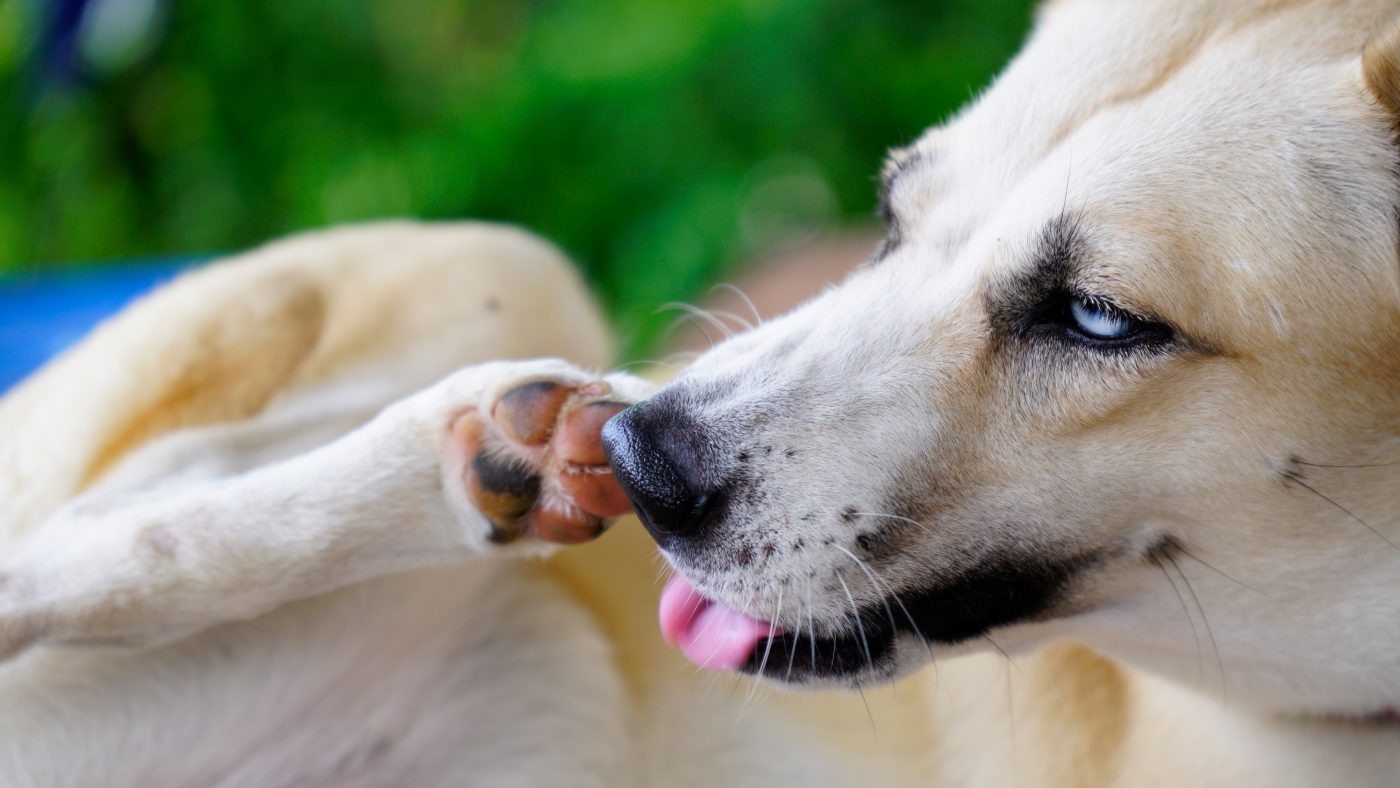 Shutterstock
Shutterstock
An anxious dog may engage in excessive licking or grooming behaviors, often to the point of causing hair loss or skin irritation. This behavior can be a self-soothing mechanism for dogs experiencing stress. If you notice your dog licking their paws, legs, or other parts of their body more than usual, it could indicate that they are trying to cope with their anxiety. In some cases, this behavior can develop into a compulsive disorder, requiring intervention to prevent harm to your dog.
Loss of Appetite
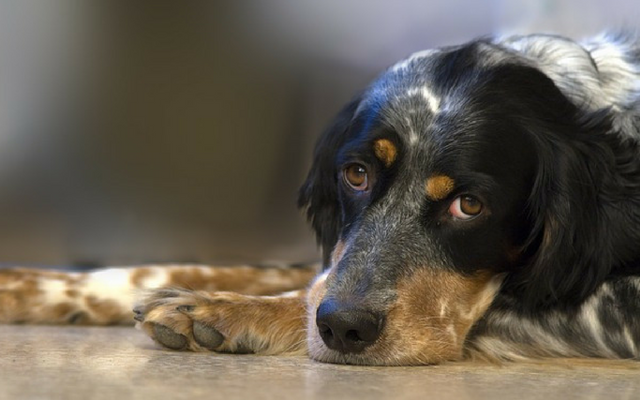 Shutterstock
Shutterstock
Changes in appetite can be a significant indicator of anxiety in dogs. Just like humans, some dogs may lose their appetite when they are stressed or anxious. If your dog is usually excited about meal times but suddenly seems disinterested in food, it might be a sign that something is bothering them. Skipping meals or refusing treats can indicate that their anxiety is affecting their overall well-being. It’s important to rule out medical causes for the loss of appetite before attributing it solely to anxiety.
Avoidance or Hiding
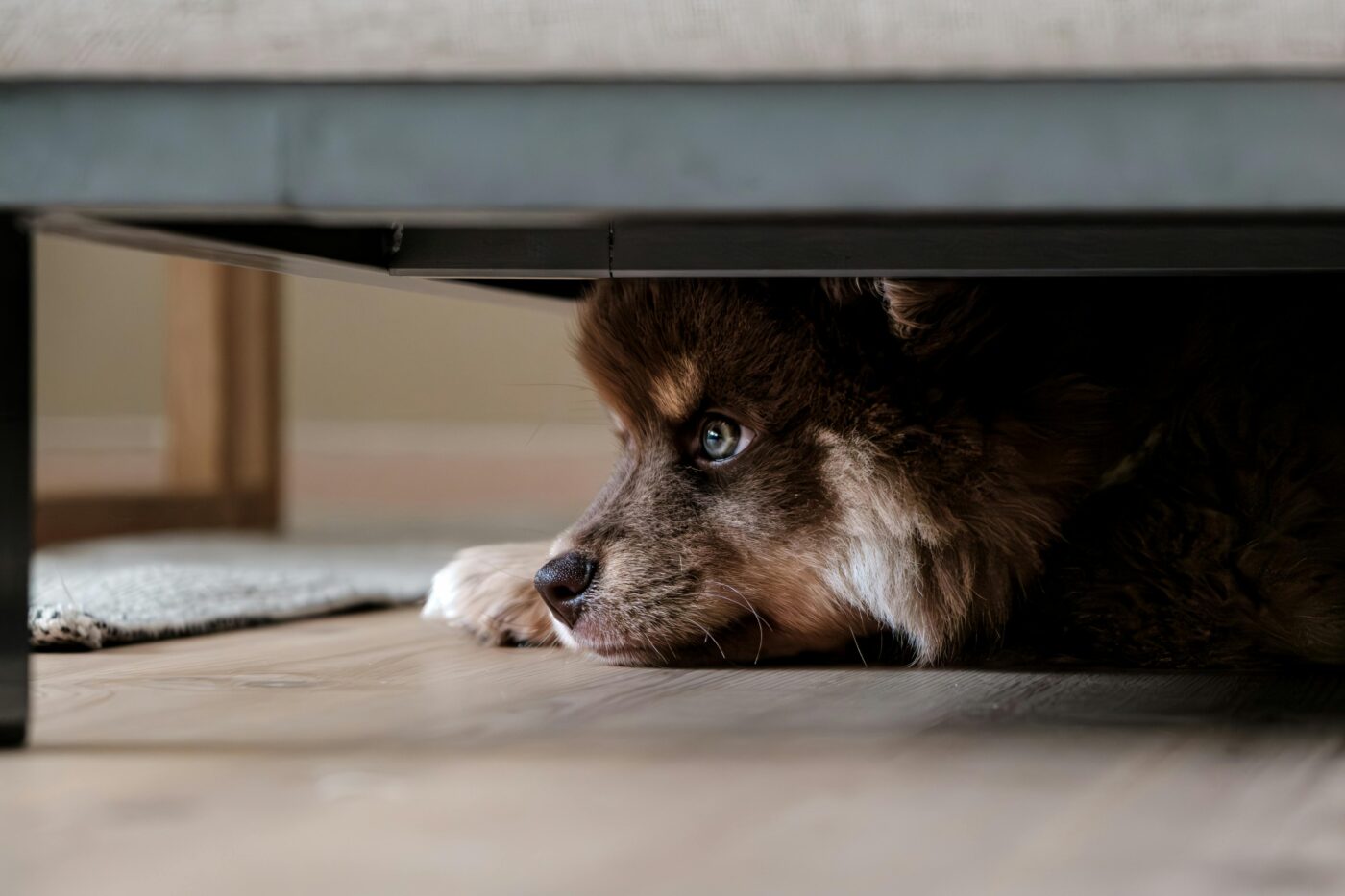 Shutterstock
Shutterstock
Dogs with anxiety may exhibit avoidance behaviors, such as hiding under furniture, refusing to leave their crate, or staying in a particular room. These dogs may shy away from interactions with people or other animals. Avoidance can be a dog’s way of trying to protect themselves from a perceived threat or stressful situation. If your dog is suddenly avoiding areas of the house where they previously spent a lot of time or is consistently hiding, it could be an indication of anxiety.
Hypervigilance
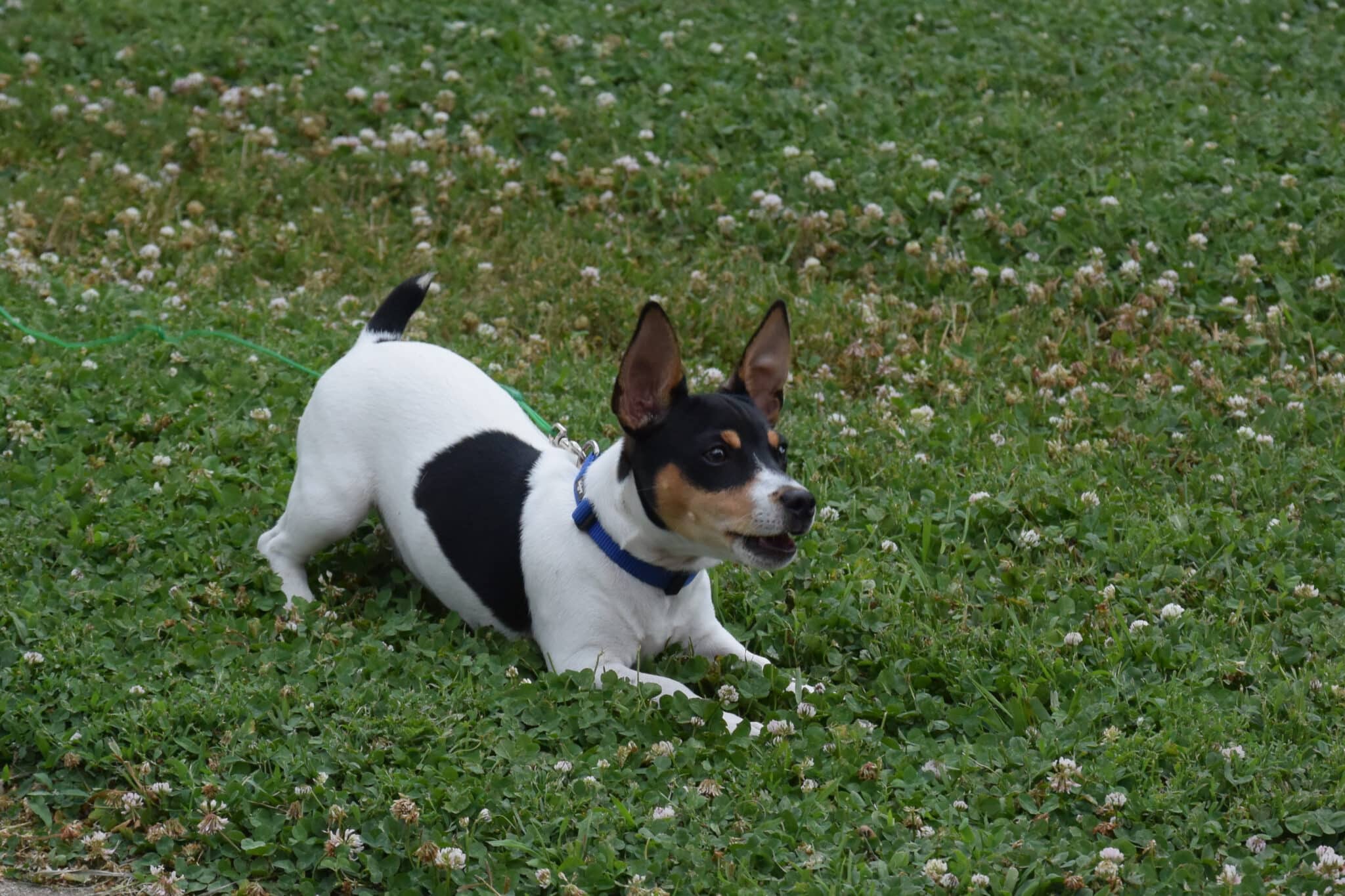 Shutterstock
Shutterstock
Hypervigilance in dogs is characterized by an exaggerated alertness and response to their environment. Anxious dogs may seem on edge, react to the slightest sounds, or constantly look around as if they are searching for potential dangers. This state of heightened awareness can prevent your dog from relaxing and may lead to other anxiety-related behaviors. If your dog is consistently exhibiting signs of hypervigilance, such as constantly scanning the room or jumping at small noises, anxiety could be the reason.
Excessive Drooling
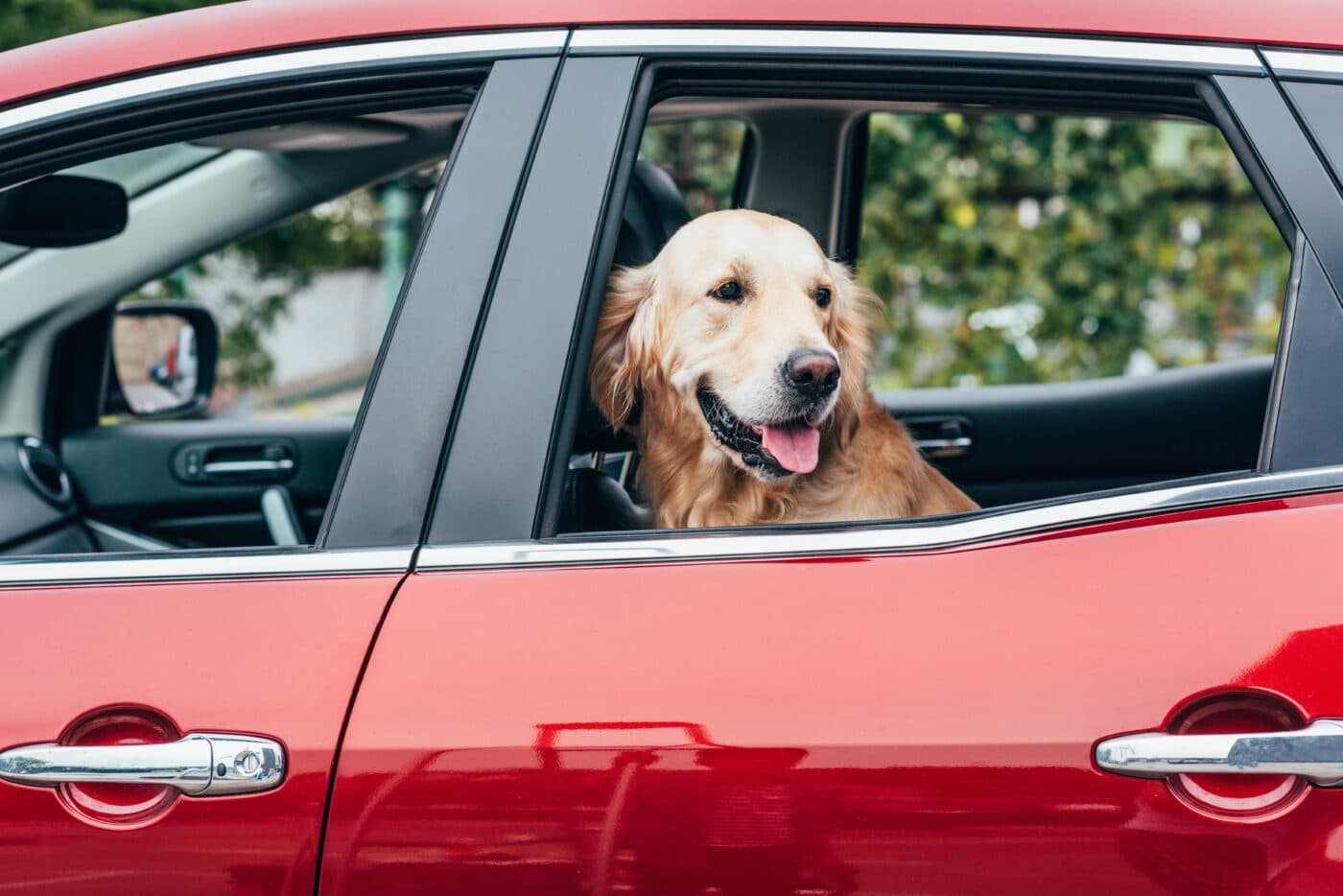 Shutterstock
Shutterstock
While drooling is common in some dog breeds, excessive drooling in a dog that doesn’t typically drool much can indicate anxiety. This symptom often occurs during stressful situations, such as car rides, vet visits, or thunderstorms. If you notice your dog drooling more than usual, especially in response to certain triggers, it could be a sign that they are feeling anxious. Be sure to monitor when the drooling occurs to help identify the source of their anxiety.
Inappropriate Elimination
 Shutterstock
Shutterstock
Anxious dogs may urinate or defecate in the house even if they are fully housetrained. This behavior can be particularly frustrating for owners, but it’s important to recognize that your dog isn’t doing it out of spite. Inappropriate elimination can occur when dogs experience extreme stress or panic, causing them to lose control of their bladder or bowels. If this behavior occurs in situations that are out of the ordinary, such as when you leave the house or during loud noises, it could be related to anxiety.
Whining or Crying
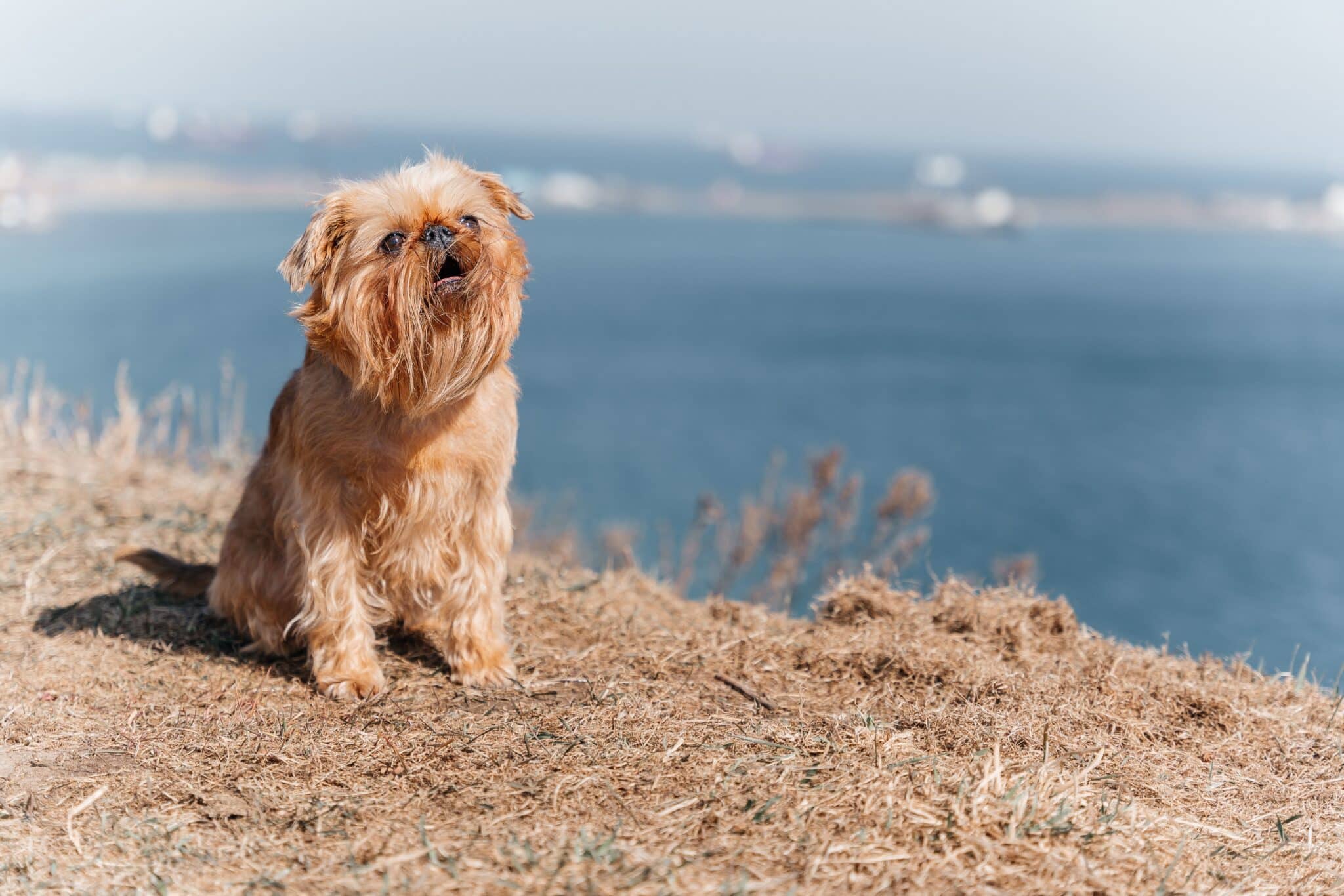 Shutterstock
Shutterstock
Dogs that are struggling with anxiety may whine or cry excessively, often for no apparent reason. These vocalizations are a way for your dog to express their discomfort or seek reassurance from you. Whining and crying can occur during separation anxiety, when your dog is feeling scared, or in response to other stressors. Pay attention to the situations that trigger this behavior, as it can help you determine what may be causing your dog’s anxiety and how to alleviate it.
Digging or Escaping
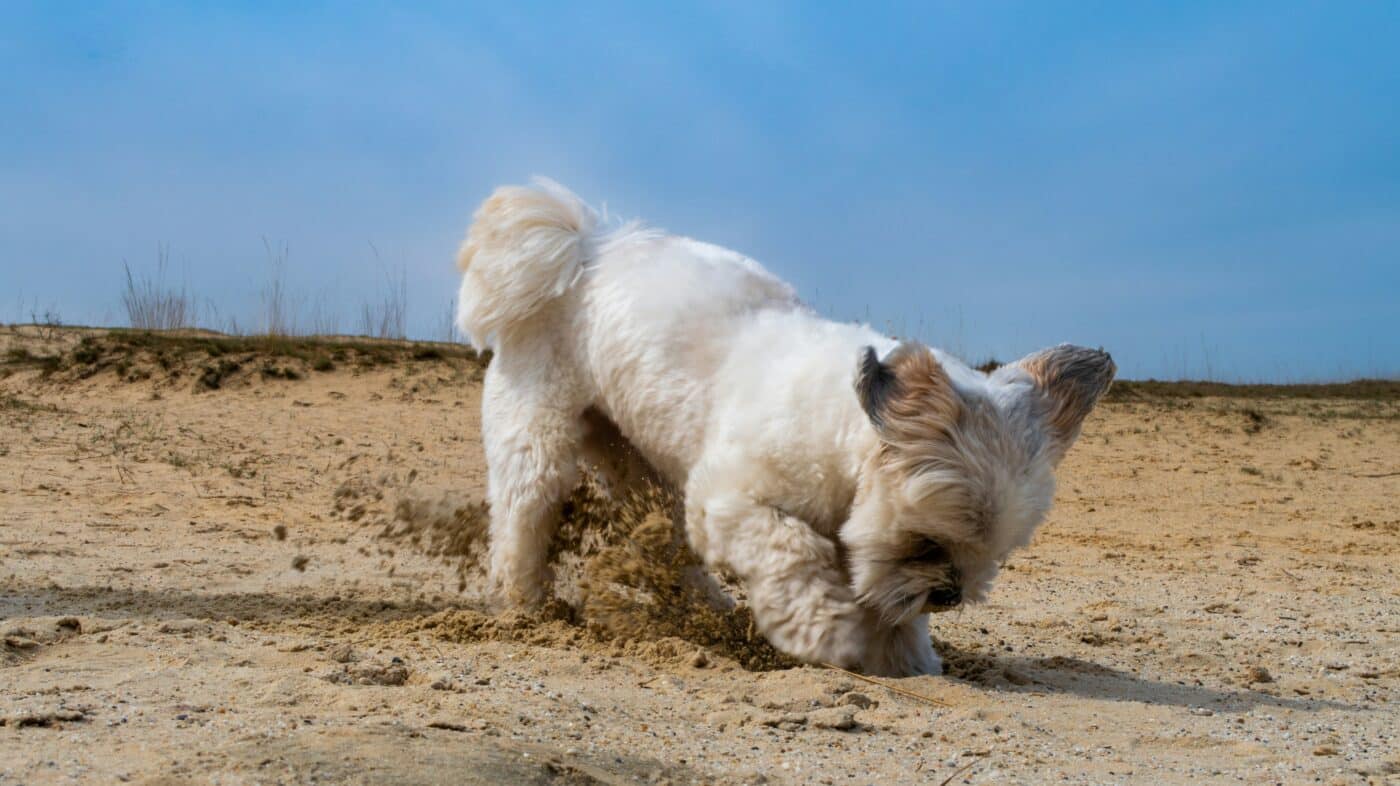 Shutterstock
Shutterstock
Anxiety can cause dogs to engage in escape behaviors, such as digging under fences, scratching at doors, or trying to bolt out the front door. This behavior is often driven by a need to “flee” from a perceived threat, even if that threat is not real. Dogs that suffer from separation anxiety may also try to escape to find their owner. If you notice your dog is suddenly trying to dig or escape more than usual, it could be a sign that they are struggling with anxiety.
Changes in Sleep Patterns
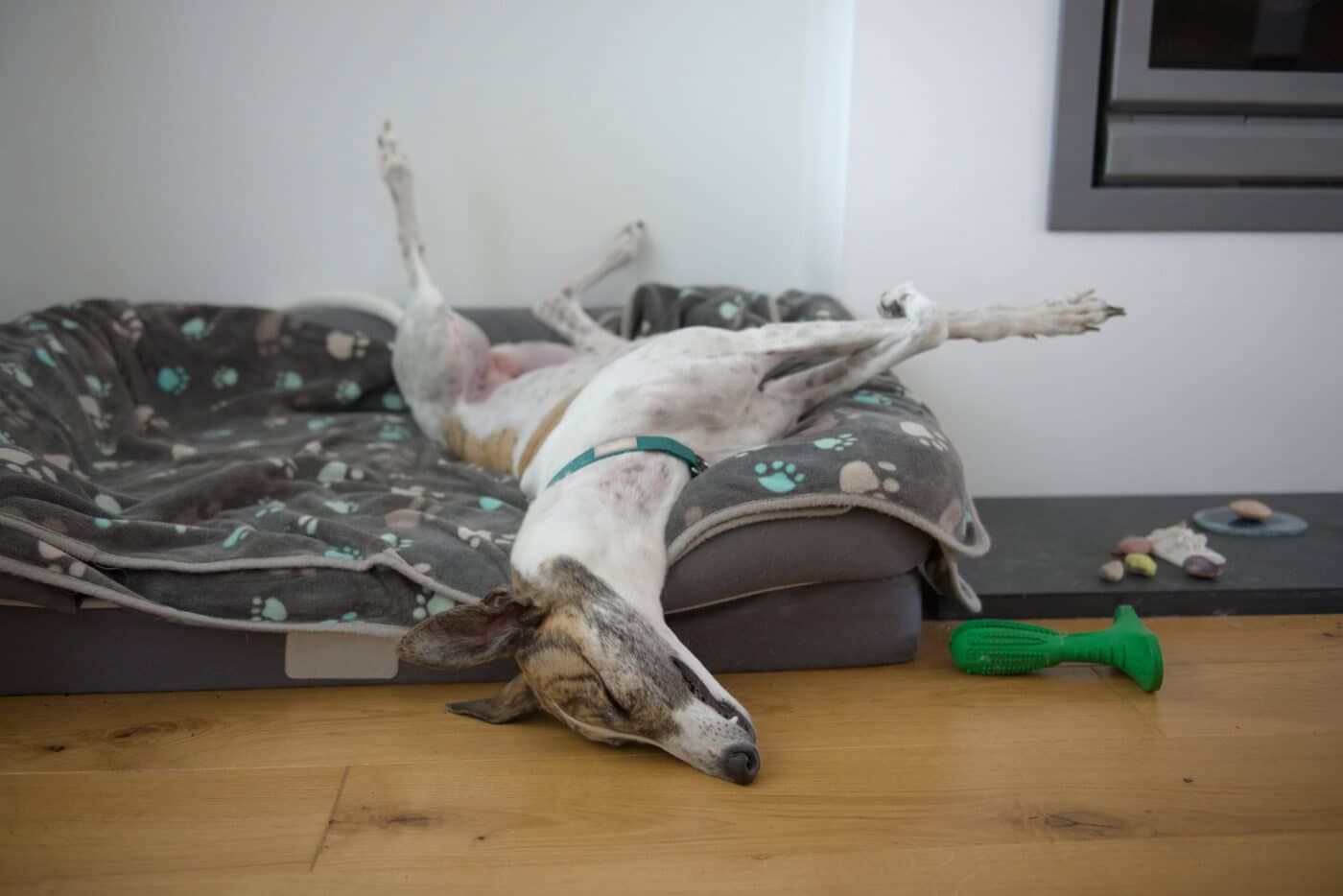 Shutterstock
Shutterstock
Anxiety can affect your dog’s sleep, just like it can for humans. Dogs with anxiety may have trouble falling asleep, stay awake longer, or wake up frequently during the night. On the other hand, some anxious dogs may sleep more than usual as a way to cope with stress. If you notice significant changes in your dog’s sleep habits, it’s worth considering whether anxiety could be the underlying cause. Monitoring their sleep patterns can provide insight into their emotional state.
Tail Tucking or Cowering
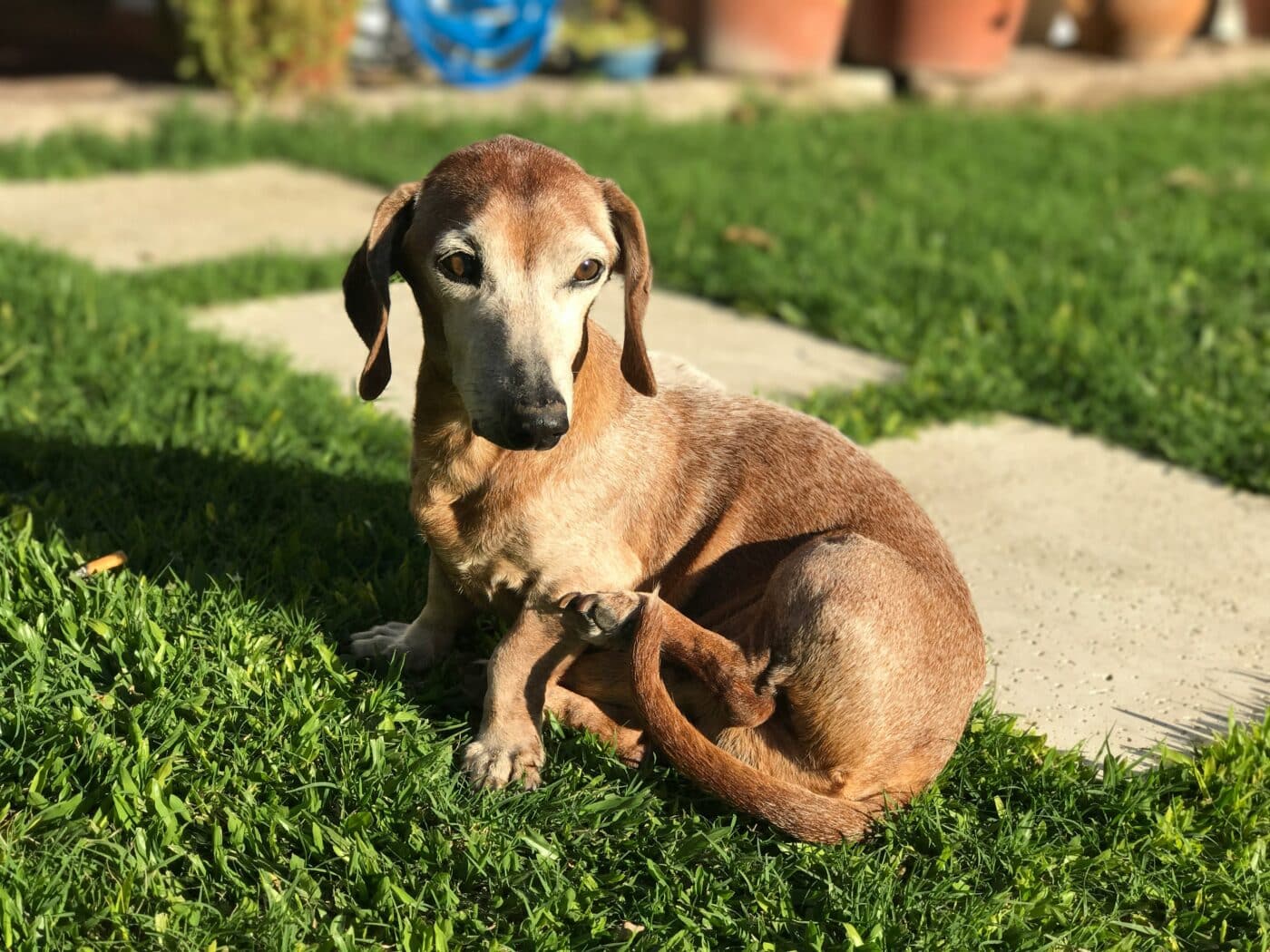 Shutterstock
Shutterstock
Body language is an important indicator of how a dog is feeling, and tail tucking or cowering is often a sign of anxiety or fear. Dogs may tuck their tails between their legs, lower their bodies to the ground, or crouch as a way to appear smaller and protect themselves from a perceived threat. If your dog is frequently displaying this body language in different situations, it could be an indication that they are experiencing anxiety and may need help to feel more secure.
Increased Aggression
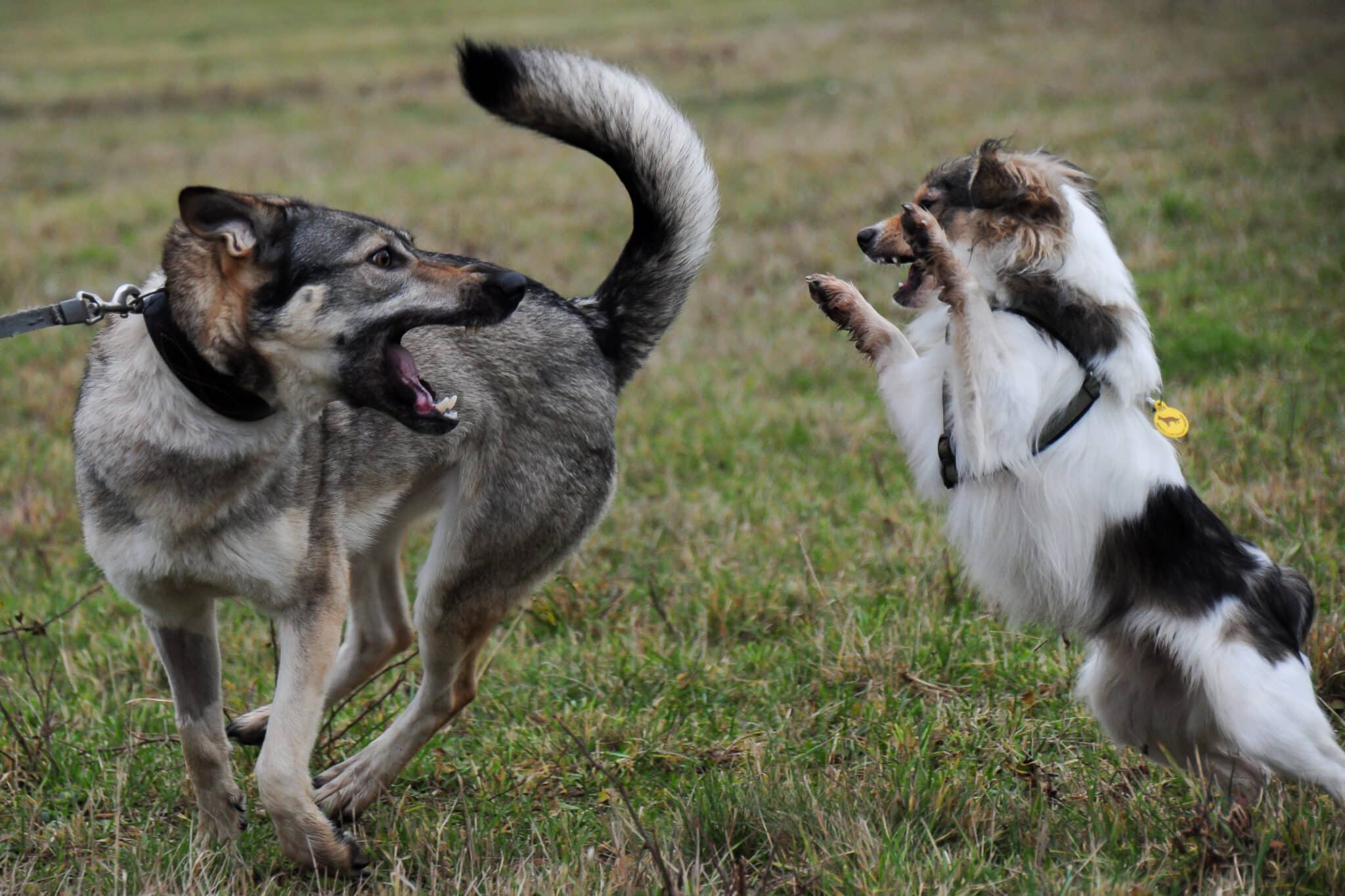 Shutterstock
Shutterstock
In some cases, anxiety can manifest as aggression in dogs. If a dog feels threatened or stressed, they may respond defensively by growling, snapping, or biting. This type of aggression is often fear-based and may occur in situations where the dog feels cornered or unable to escape. It’s important to recognize that this behavior is a symptom of their anxiety, not necessarily a reflection of their personality. Working with a professional trainer or behaviorist can help address the root of the anxiety and reduce aggressive behaviors.
Excessive Clinginess or Seeking Reassurance
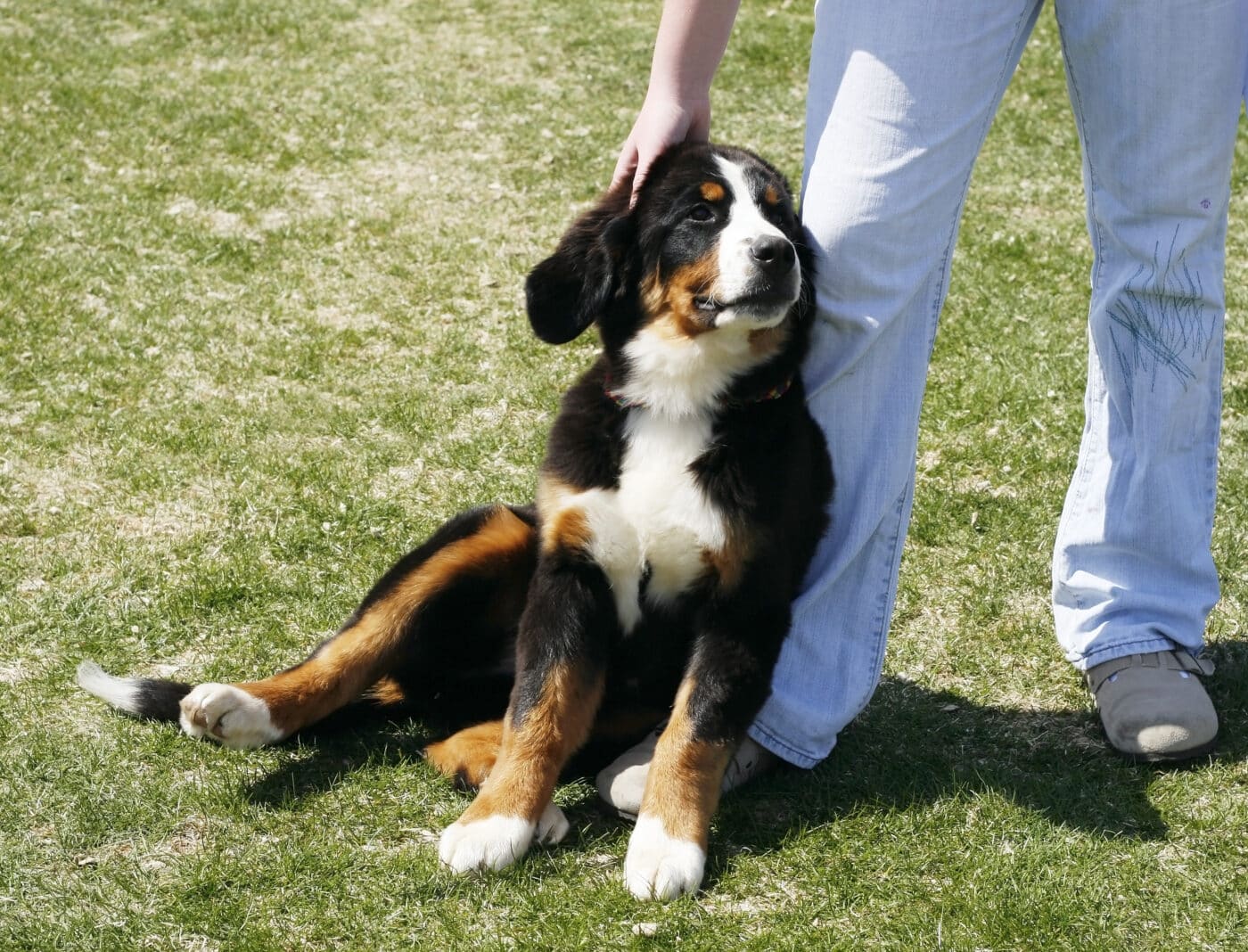 Shutterstock
Shutterstock
Anxious dogs may display clinginess or constantly seek reassurance from their owners. They may follow you from room to room, lean against you, or paw at you for attention. While some degree of clinginess is normal, excessive behavior could indicate that your dog is feeling insecure or anxious. Dogs with separation anxiety, in particular, may become overly attached to their owners and exhibit extreme distress when left alone. Recognizing this behavior as a potential sign of anxiety can help you address it appropriately.
The “Paw-ssible” Anxiety Aches
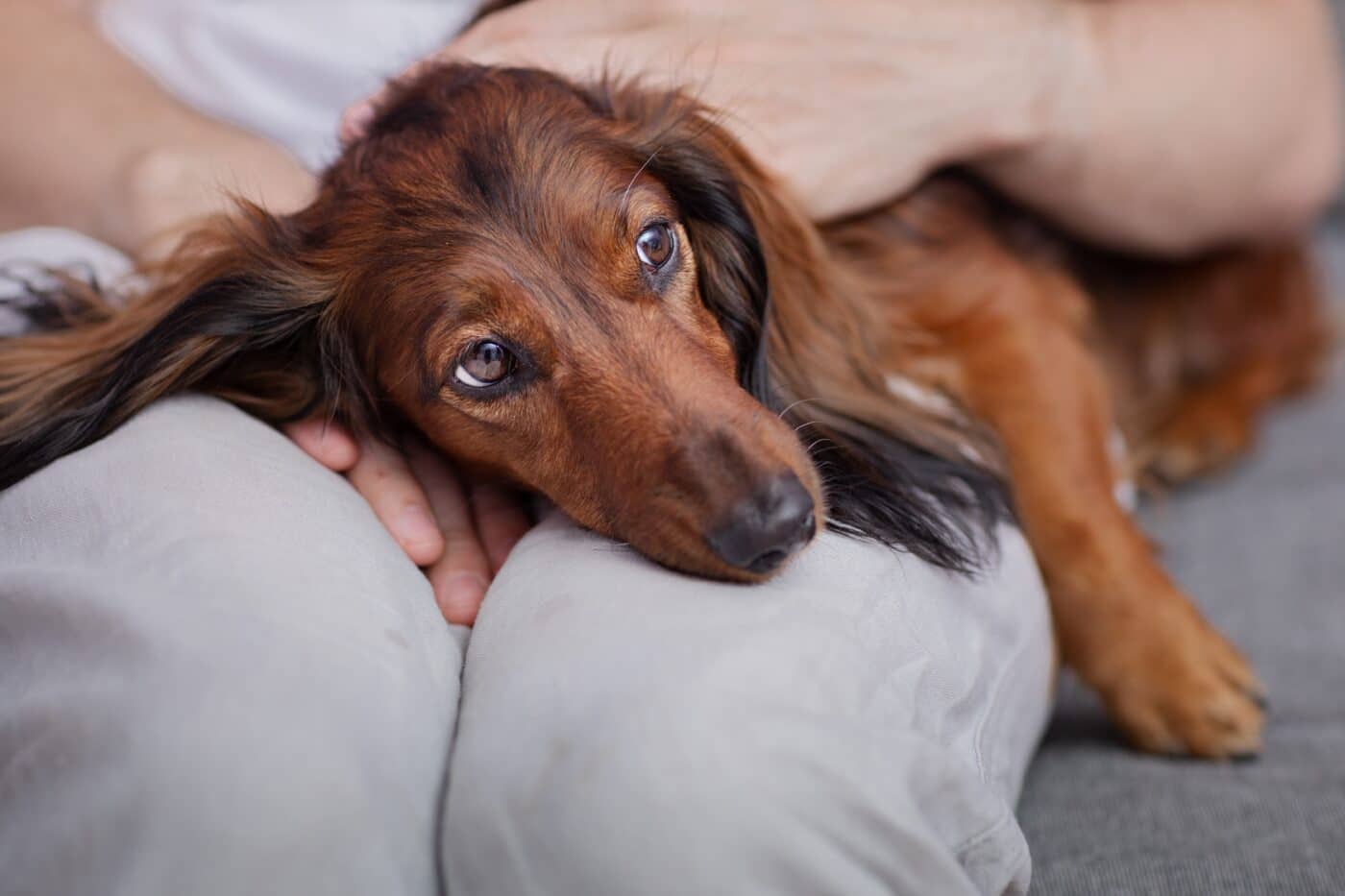 Shutterstock
Shutterstock
Dogs, like humans, can experience stress and anxiety, and these signs shouldn’t be ignored. If your pooch is exhibiting any of these behaviors, it’s time to take action and find ways to help them feel secure and happy again. Whether it’s a belly rub, a calming treat, or a cozy blanket, sometimes the little things can make all the difference in soothing an anxious dog. Just remember: when it comes to doggy anxiety, it’s okay to give them a little extra love—and maybe a few extra treats, too!
 Toledo, United States.
Toledo, United States.